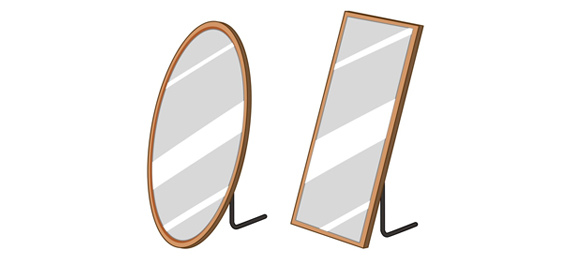
The mirror takes on the color of whatever is reflected on it. However, in movies and books, mirrors are often portrayed as silver. Some argue that mirrors have no color, while others suggest they appear slightly greenishBut what will the actual color be? So, what color is the mirror? Come let’s explore it!
What Color is the Mirror?
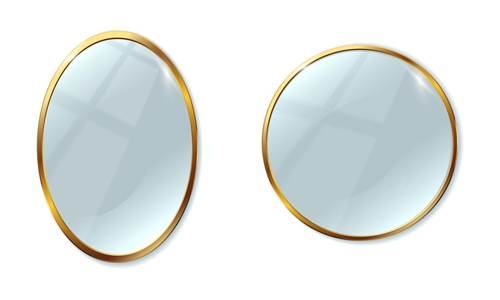
What color is the mirror?
- A. Black
- B. White
- C. Green
- D. Silver
Studies say that a mirror is nothing but a greenish block of soda-lime with a reflective back. Most household mirrors are constructed using a soda-lime-silica glass substrate and a silver backing. This combination gives mirrors their greenish color. However, proving this by simply observing your reflection in a mirror can be challenging.
Also, read the hardest substance on earth
How Do Mirrors Work?
Mirrors work by reflecting light that strikes their surfaces. Light travels in straight lines, known as rays. When light hits a smooth, flat mirror, it reflects off at the same angle it struck, maintaining the original direction and forming an image.
Do Mirrors Flip Everything Horizontally?
A mirror reverses things horizontally because of the way light reflects off surfaces. When light hits a mirror, it bounces off and creates a reflected image. The mirror doesn’t reverse things vertically because the top and bottom of an object are not flipped when light reflects off a mirror. Instead, the left and right sides of the object are flipped, creating the horizontal reversal effect. This is why text appears reversed in a mirror, but the orientation of the letters remains the same.
Why Isn’t a Mirror Plain White?
Mirrors aren’t plain white because the reflecting surface of a mirror is extremely smooth, even at the microscopic level. Unlike white objects, which have rough surfaces at the microscopic level causing light to scatter in all directions, mirrors reflect light in a controlled manner.
Are Mirrors Silver?
Nope!! Mirrors are not silver but silver is used for making mirrors due to its high reflectivity property across the visible spectrum, reflecting light. It is a low-density material so its weight is comparatively lesser than the other white-colored metal.
Types of Mirrors
Flat Mirrors
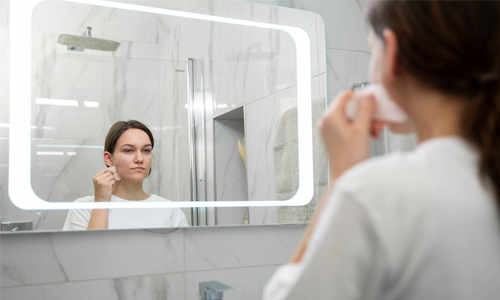
Flat mirrors have a flat reflective surface also known as plain mirror. The image formed by the flat mirror is always virtual and erect. They will also be of the same size as the object.
Spherical Mirrors
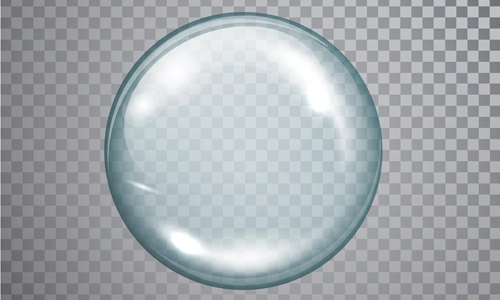
Spherical mirrors are nothing but curved mirrors formed by part of a hollow glass sphere with a reflecting surface.
Two-Way Mirrors

Two-way mirror has a normal mirror on one side and transparent glass on the other. It is basically for domestic or professional use, it is an ideal solution to keep the intimacy of a room without losing any visibility. These types of mirrors are mostly used for observation in places such as police interview rooms, homecares, etc.
Concave and Convex Mirrors for Optical Purposes
A concave mirror is real and inverted for optical purposes. However, in the case of a convex mirror, the reflection will take place from the outer surface of the spherical mirror. Basically, convex mirrors are virtual and erect.
Antique and Decorative Mirrors
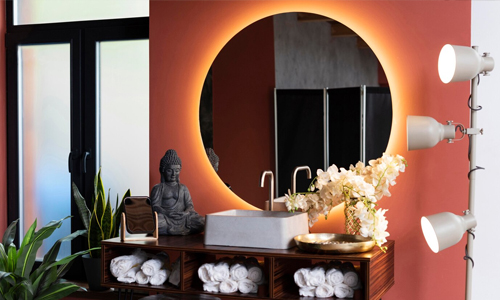
Antique and decorative mirrors are used to describe mirrors that have coatings or tints that make the mirror appear as if it has deteriorated with age, and they typically feature ornate frames, dark edges, and distressed patches.
Smart Mirror
Smart mirrors are two-way mirrors with an electronic display behind the glass. The viewer can see the different kinds of information in the form of widgets, such as weather, time, date, and news updates on these displays.
What Are the Different Purposes Mirrors Serve?
Reflection
Basically, mirrors are very smooth, which means they can reflect light without scattering. By sending light particles back in nearly the same arrangement, a mirror reflects the light at the observer in a way that lets them see their reflection.
Personal Grooming

Mirrors are an essential element for personal grooming. We all like self-grooming, right!!
Mirrors serve both functional and stylistic purposes. Mirrors not only provide a reflective surface for personal grooming but also contribute to the overall aesthetic appearance of the space.
Decorating
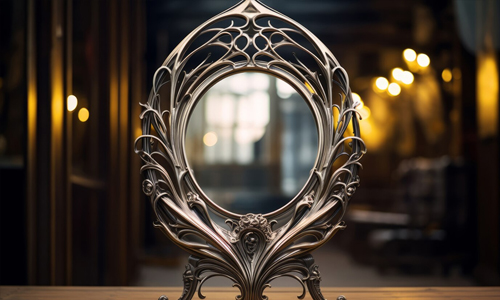
The mirrors create an illusion of space and light. It also serves as a decorative element, and it promotes the positive energy flow around us. Do you know? Mirrors are a great way to brighten up a dull room. They are used as decorative things in rooms with low ceilings, or small windows to enhance and add visual appeal to the living area.
Illusion of space
Mirrors are masterpieces for giving the illusion of space. They bounce light around the rooms to make everything feel more spacious. As the name says, you may use mirrors to create the appearance of something that will not be there to manipulate the viewer’s perception of reality.
Reflecting Light
Reflecting light is an innate and important property of mirrors, and this is computably gauged by the ratio between light and reflection from the surface and that will happen upon the surface.
We hope this blog helps you know more about the mirror and its types and uses. So finally, the actual color of the mirror is declared, it’s faintly green!!